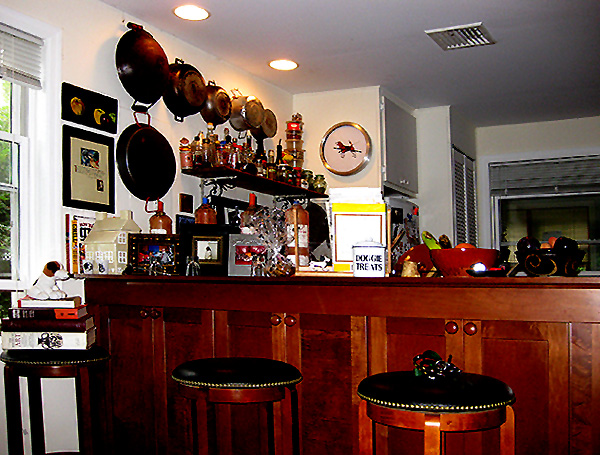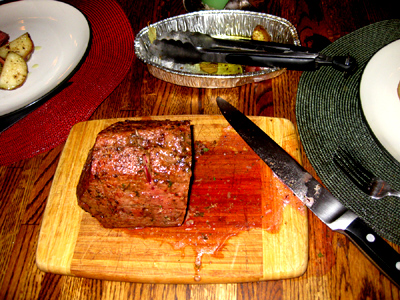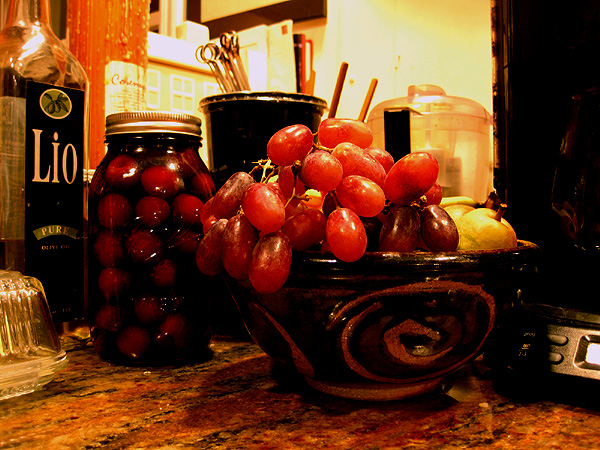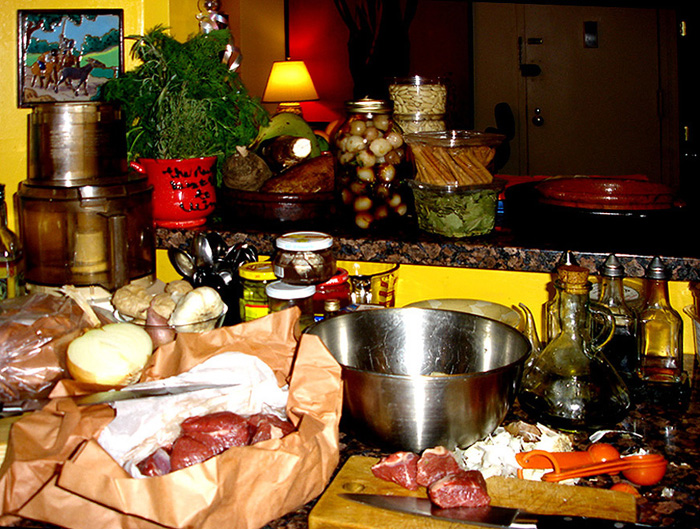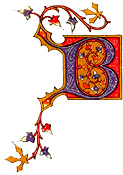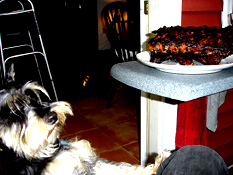“ hen
I drink, I think; and when I think, I drink.” hen
I drink, I think; and when I think, I drink.”
~ François Rabelais
 
“ eer
is not a good cocktail-party drink, eer
is not a good cocktail-party drink,
especially in a home where you don’t know where the bathroom is.”
~ Billy
Carter

9
February 2010
Andy
Soltis |
BEER
BONES STUDY FOR WHAT ALES YOU
It
turns out that beer, particularly pale ale, builds strong bones,
a new study found.
Beer
is a lush source of dietary silicone, a nutrient that helps
strngthen bone density and fights diseases like osteoporosis,
reasearchers at the University of California, Davis, found.
Not
all brews are born alike, though, according to a study of 100
beers. Beers made with malted barley and hops have a lot more
of the nutrient than wheat-based beers.
|
|
|
Saint
Brigid,
Beer-Loving Woman,
Pray For Us!
“I
should like a great lake of ale, for the King of the
Kings.
I should like the family of Heaven
to be drinking it through time eternal.”
~ Saint Brigid
of Kildare
Brigid's
feast day falls on 1 February, the
date of Imbolg, the pagan
festival of spring.
|
|
|
| Patron
Saints of beers, brewers, hop-growers, hops gatherers, maltsters,
coopers, innkeepers, tavern keepers {publicans}, barmaids, bartenders
and beer merchants |
|
|
|
|
|
|
|
|
|
Saint
Abdon |
Saint
Adrian
of Nicodemia |
Saint Amandus
of Maastricht |
Saint Arnold
Soissons |
Saint
Arnou of Oudenaarde
|
Saint
Arnulf
of Metz |
Saint Augustine
of Hippo |
Saint
Barbara |
Saint
Bartholomew * |
|
|
|
|
|
|
|
|
|
Saint
Benedict |
Saint
Boniface
of Mainz |
Saint
Columbanus |
Saint
Cuthbert |
Saint
Dorothy
of Cappadocia
|
Saint
Florian |
Saint
Gambrinus |
Saint
Hildegard
von Bingen |
Saint
Lawrence |
|
|
|
|
|
|
|
|
|
Saint
Luke
Apostle |
Saint
Martin
of Tours |
Saint
Matthew
Apostle ** |
Saint
Medard
of Noyon |
Saint
Nicholas of Myra aka "Santa" |
Saint
Theodotus |
Saint
Urban
of Langres |
Saint
Veronus |
Saint
Wenceslaus |
*
Also patron saint of mead drinkers
**
Patron
saint of publicans. By the Renaissance, the word "publican"
meant a tavernkeeper, the licensed landlord of a public house.
| Associated
though not quite Patronizing |
|
Patron
saint of England
Feast Day:
April 23, which marks the end of the traditional
Bavarian brewing season.
|
|
|
Patron
saint of Carpenters
Feast Day:
March 19, the traditional beginning of
Fruhjahrsbierfest in Munich.
. |
|
|
Saint George |
Saint Joseph |
| |
|
"It
is my design to die in the brew-house; let ale be placed to
my mouth when I am expiring so that when the choir of angels
come they may say: 'Be God propitious to this drinker.'"
-
St. Columbanus
Heil
Bier!
THE GERMAN SHEPHERD |
|
|
| |
"Don't
drink the water, drink beer." - Saint
Arnold
of Metz
|
|
Sources:
Saints of Suds ("When The Saints Go Malting In")
(by
The Brews Brothers (Steve Frank and Arnold Meltzer)
and
|
Deities
of Antiquity
The Originals
The oldest
findings of beer were in Egyptian pyramids so there we start.
A Greek historian from the time of Julius Caesar wrote that,
“Osiris taught the people how to brew the beverage which
is made of barley , which is not greatly inferior to wine
in odor and potency.” |
| |
|
|
|
|
|
|
OSIRIS
In Ancient Egyptian culture,
Osiris is the god of agriculture. He is also known as the god
of beer.
•
|
AEGIR
In Norse mythology, Aegir is the god of the
sea. He is also known as the god of beer and brewing as well
as Meade.
|
MMAMA MWANA
WARESA
In Zulu mythology, Mbaba Mwana Waresa is the
goddess of beer.
|
NINKASI
Ninkasi is the ancient Sumerian matron goddess
of beer. She was borne of "sparkling fresh water."
|
RAUGUTIENE
In Ancient Baltic and Slavic
mythology, Raugutiene is known as the goddess of beer.
•
|
SILENUS
In Ancient Greek mythology, Silenus is the
god of beer and a drinking companionto his buddy, Dionysus,
god of wine.
•
|
YASIGI
In certain African cultures, Yasigi is the
goddess of beer.
•
•
|
"He
was a wise man who invented beer."
~ Plato
|
OUR
DOGHOUSE TRINITY
Sacred Objects of Our
Devotion |
|
|
|
|
Lagunitas (see
the Doggie on the label)
IPA
|
Flying Dog
DOGGIE STYLE CLASSIC PALE ALE |
Guinness
SMITHWICK'S IRISH ALE |
"Good
people drink good beer."
~ Hunter S. Thompson
| OUR
BELGIAN DOGGIE DUO
|
|
|
|
| Palm
SPECIAL BELGE
|
Stella
Artois
PILSNER LAGER |
| WHILE
AT
CHATEAU les CHIENS
|
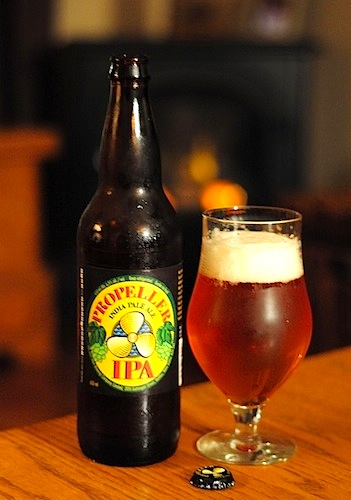
|
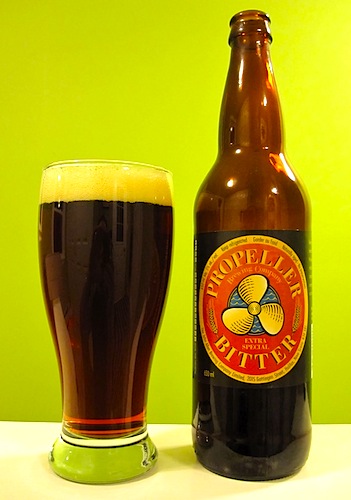 |
| Propeller
IPA |
Propeller
BITTER |
How Beer Gave
Us Civilization
By JEFFREY P. KAHN

March 15, 2013
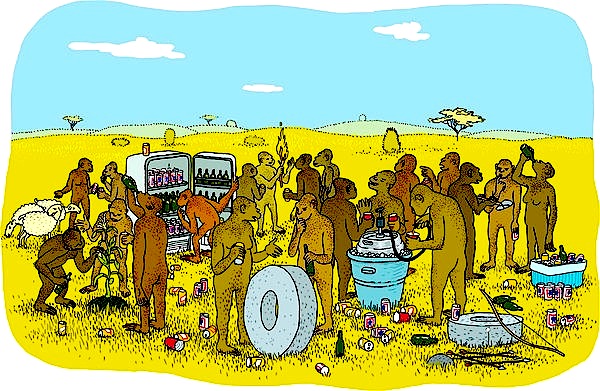
HUMAN beings
are social animals. But just as important, we are socially constrained
as well.
 We
can probably thank the latter trait for keeping our fledgling
species alive at the dawn of man. Five core social instincts,
I have argued, gave structure and strength to our primeval herds.
They kept us safely codependent with our fellow clan members,
assigned us a rank in the pecking order, made sure we all did
our chores, discouraged us from offending others, and removed
us from this social coil when we became a drag on shared resources. We
can probably thank the latter trait for keeping our fledgling
species alive at the dawn of man. Five core social instincts,
I have argued, gave structure and strength to our primeval herds.
They kept us safely codependent with our fellow clan members,
assigned us a rank in the pecking order, made sure we all did
our chores, discouraged us from offending others, and removed
us from this social coil when we became a drag on shared resources.
Thus could our ancient forebears cooperate, prosper, multiply
— and pass along their DNA to later generations.
But then, these same lifesaving social instincts didn’t
readily lend themselves to exploration, artistic expression,
romance, inventiveness and experimentation — the other
human drives that make for a vibrant civilization.
To free up those, we needed something that would suppress the
rigid social codes that kept our clans safe and alive. We needed
something that, on occasion, would let us break free from our
biological herd imperative — or at least let us suppress
our angst when we did.
We needed beer.
Luckily, from time to time, our
ancestors, like other animals, would run across fermented fruit
or grain and sample it. How this accidental discovery evolved
into the first keg party, of course, is still unknown. But evolve
it did, perhaps as early as 10,000 years ago.
Current theory has it that grain was first domesticated for
food. But since the 1950s, many scholars have found circumstantial
evidence that supports the idea that some early humans grew
and stored grain for beer, even before they cultivated it for
bread.
Brian Hayden and colleagues at Simon Fraser University in Canada
provide new support for this theory in an article published
this month (and online last year) in the Journal of Archeological
Method and Theory. Examining potential beer-brewing tools in
archaeological remains from the Natufian culture in the Eastern
Mediterranean, the team concludes that “brewing of beer
was an important aspect of feasting and society in the Late
Epipaleolithic” era.
Anthropological studies in Mexico suggest a similar conclusion:
there, the ancestral grass of modern maize, teosinte, was well
suited for making beer — but was much less so for making
corn flour for bread or tortillas. It took generations for Mexican
farmers to domesticate this grass into maize, which then became
a staple of the local diet.
Once the effects of these early brews were discovered, the value
of beer (as well as wine and other fermented potions) must have
become immediately apparent. With the help of the new psychopharmacological
brew, humans could quell the angst of defying those herd instincts.
Conversations around the campfire, no doubt, took on a new dimension:
the painfully shy, their angst suddenly quelled, could now speak
their minds.
But the alcohol would have had more far-ranging effects, too,
reducing the strong herd instincts to maintain a rigid social
structure. In time, humans became more expansive in their thinking,
as well as more collaborative and creative. A night of modest
tippling may have ushered in these feelings of freedom —
though, the morning after, instincts to conform and submit would
have kicked back in to restore the social order.
Some evidence suggests that these early brews (or wines) were
also considered aids in deliberation. In long ago Germany and
Persia, collective decisions of state were made after a few
warm ones, then double-checked when sober. Elsewhere, they did
it the other way around.
Beer was thought to be so important in many bygone civilizations
that the Code of Urukagina, often cited as the first legal code,
even prescribed it as a central unit of payment and penance.
Part of beer’s virtue in ancient times was that its alcohol
content would have been sharply limited. As far as the research
has shown, distillation of alcohol to higher concentrations
began only about 2,000 years ago.
Today, many people drink too much because they have more than
average social anxiety or panic anxiety to quell — disorders
that may result, in fact, from those primeval herd instincts
kicking into overdrive. But getting drunk, unfortunately, only
compounds the problem: it can lead to decivilizing behaviors
and encounters, and harm the body over time. For those with
anxiety and depressive disorders, indeed, there are much safer
and more effective drugs than alcohol — and together with
psychotherapy, these newfangled improvements on beer can ease
the angst.
But beer’s place
in the development of civilization deserves at least a raising
of the glass.
Jeffrey
P. Kahn, a clinical associate professor of psychiatry at NewYork-Presbyterian
Hospital, is the author of “Angst: Origins of Anxiety
and Depression.”
|
"Beer,
so much more than a breakfast drink!"
~ Anonymous


|
l.
to r.: Marc, Vin Rosé, Dry Sherry, Calvados, Spanish
(Sherry)
Brandy, Kettle One Vodka, Jenever, Meade,
Aquaqvit, Rumple Minze Peppermint Schnapps, Poire Eau de Vie,
Don Q Cristal Rum, Kentucky Bourbon |
“ never
met an interesting man who didn’t drink.” never
met an interesting man who didn’t drink.”

Katharine Hepburn
The
remains of the evening
|
Spaghetti
with Fried Egg and Pimento |
Pasta
e Fasoi |
Risotto
Style Pasta with Chicken |
Spinach-Mushroom
Lasagna |
Pasta
with Clams and Tomatoes
Bean
and Clam Stew
Clams, parsley,onions
and garlic, saffron, white wine and chili pepper, paprika |
Clams braising |
A
Simpler Supper
Pickled
Pig’s Feet, Pickeled Tomatos, Rice and Red Kidney Beans
LUNCH:
ROASTED CORN |
DINNER:
CHORIZO CASSOULET |
Tripe,
Madrid Style

Corned
Beef & Cabbage |
Serenata:
Cod with Root Vegetables |
| Kielbasa
with Sauerkraut and Potatoes
|
Poached Eggs with Corned Beef Hash

" meal can be thought of as a ritual and a work of art, with limits laid
down,
meal can be thought of as a ritual and a work of art, with limits laid
down,
desires aroused and fulfilled, enticements, variety, patterning and
plot.
As in a work of art, not only
the overall form, but also the details matter intensely."
~ Margaret Visser in
The Rituals of Dinner
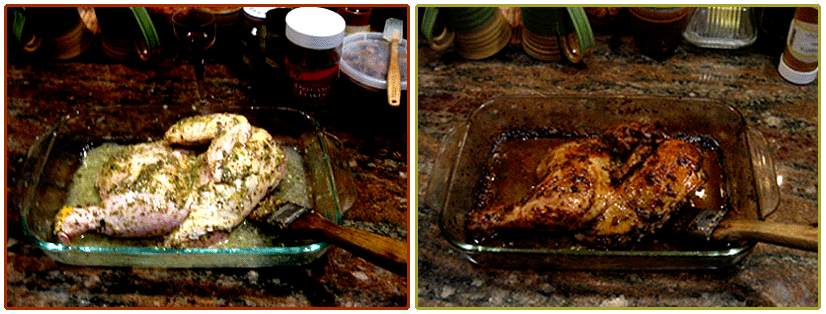
Chicken with
Herbs
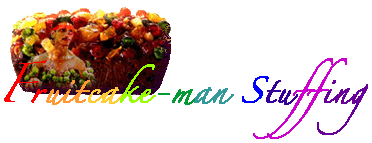
Ground
pork sausage with apples, celery, leeks, bayleaf, garlic, ginger,
allspice, cinnamon, cloves, coriander seed, cumin, nutmeg, paprika,
star anise,
dried apricots, dried cherries, dried cranberries, dates, prunes, raisins,
almonds, pecans, walnuts and
Bourbon
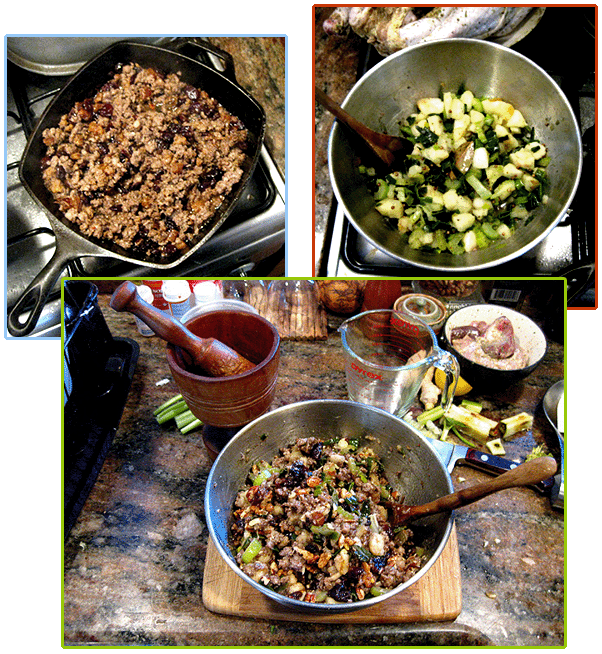
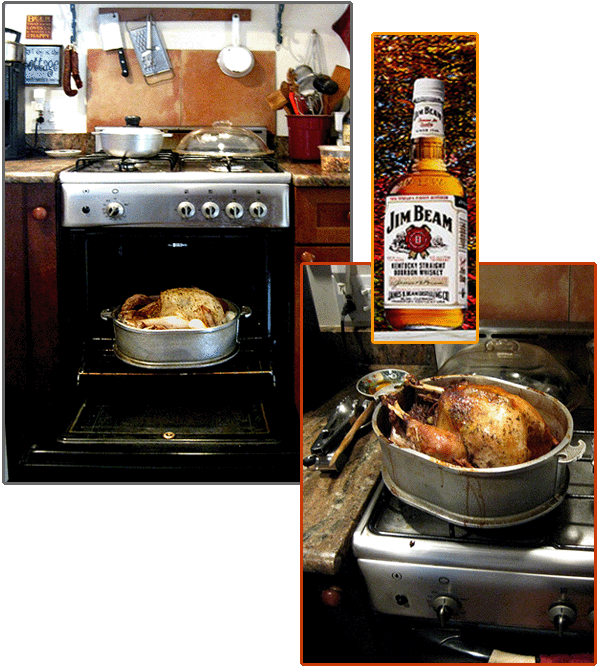

We
who enjoy food in its original concept
commiserate with those who surrender to the latest
“trends”
|
~
MOLECULAR GASTRONOMY ~
Mr. Vargas' Turkey Dinner |
|


|


